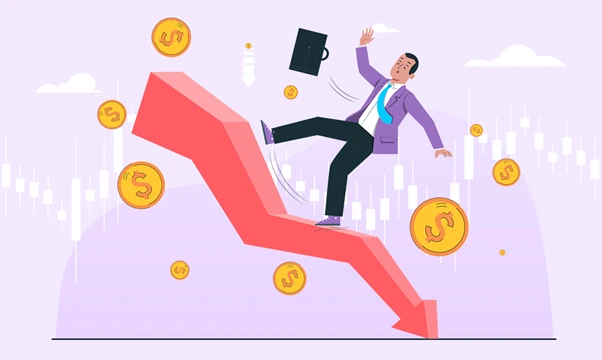
When trading is discussed, especially for advanced traders, liquidity and slippage are two words that often come up.
They are both simple concepts but are big players in determining how trades are executed and the overall trading experience. If you have ever had to place a trade and got a different price than you expected, or had difficulty executing an order quickly, you have experienced these problems first-hand.
In this blog, we will go through what liquidity and slippage are, how they affect your trades, and how you can use Amber Markets’ tools to overcome them.
Understanding Liquidity – How it Forms the Foundation of Efficient Markets
In the trading space, liquidity is the ease with which an asset can be bought or sold without significantly affecting its price. In essence, liquidity refers to the availability of buyers and sellers in a market, specifying how fast you can get in and out of a position.
High Liquidity vs Low Liquidity
- High Liquidity:
A market with high liquidity has lots of trading activity, with many participants ready to buy or sell at any time. This means trades are executed fast at stable prices. For example, forex majors like GBP/USD are known for their high liquidity, so are perfect for traders who want fast execution and minimal price slippage.
- Low Liquidity:
On the other hand, low liquidity markets lack enough participants, so trades take longer to execute and price spreads are wider. Trading in such markets is risky as prices can move big time due to the absence of counterparty interest.
Why Liquidity Matters for Traders
- Tighter Spreads and Lower Costs:
Trading costs are notably affected by liquidity. High liquidity translates into tighter bid-ask spreads, and lower transaction costs for traders. For example, Amber Markets provides very competitive spreads for all assets, which means traders can make the most out of their trade orders.
- Risk Management:
Traders can get in and out of positions quickly in liquid markets, especially during volatile times. It reduces the risk of being stuck in bad positions, which is common in low liquidity markets.
- Efficient Execution:
High liquidity supports the optimal execution of large volume trades without causing huge price disruption. This is important for institutional and advanced retail traders to maintain profitability.
Key Factors That May Impact Liquidity
Liquidity is not static, it changes based on many factors:
- Trading Hours:
Liquidity is at the highest level during the concurrent periods, e.g. the London-New York forex session, as it is the most preferred trading time for traders.
- Market Events:
Economic releases and geopolitical events can temporarily increase or decrease liquidity. An example of when liquidity becomes scarce is the period prior to a central bank decision when the market is more uncertain and therefore more risky.
- Asset Type:
Certain assets such as the major forex pairs by nature are more liquid than exotic currencies or instruments that are not so popular.
Amber Markets is equipped with the most innovative trading platforms that offer traders the possibility to access and track the liquidity information in real time. Hence, they will be able to take the right decisions.
What is Slippage? The Hidden Costs of Trading
Slippage is the difference between the expected price of the trade and the actual price at which it is executed. While often overlooked, slippage can be a real killer, especially in volatile or illiquid markets.

How Slippage Occurs?
Slippage happens when the market moves “between the time you place an order and the time it gets filled.” This is most common during periods of high volatility or low liquidity.
- Example: Suppose you place a buy order for a forex pair at 1.2600. By the time your order is executed, the price has moved to 1.2610, resulting in a worse entry point and additional costs.
Types of Slippage
- Negative Slippage
It is when the filled price is worse than the expected price. It costs you more and is often frustrating for traders.
- Positive Slippage
Sometimes traders get positive slippage where the executed price is better than the expected price. While rare, it underscores the unpredictability of slippage.
When Does Slippage Happen?
Slippage tends to happen under the following market conditions:
- High Volatility: Central bank announcements or geopolitical events cause large price swings, so slippage is more likely.
- Low Liquidity: Illiquid markets have few counterparties to fill your order at the price you want, hence slippage can happen.
- News Releases: Major news events create price gaps, leading to significant slippage for traders.
How Liquidity and Slippage Impact Trade Execution
Liquidity and slippage are closely related. In illiquid markets, there are few buyers or sellers so prices can move a lot during execution, exacerbating slippage. In highly liquid markets, there are many market participants so slippage is less likely, spreads are tighter and pricing is more consistent.
Here is a quick summary:
- In liquid markets, orders are filled almost instantly. Whereas, illiquid markets may cause partial fills or delayed execution, leaving traders exposed to price changes (slippage).
- Illiquidity can trap you in a bad position where you cannot get out without incurring big losses. This is more pronounced in markets where demand dries up suddenly.
Amber Markets tackles these challenges by providing traders with access to liquid assets and powerful platforms designed to execute trades swiftly, even in volatile market conditions.
How To Reduce the Impact of Slippage and Liquidity for Optimal Trade Execution
Slippage is part of trading, but there are ways to reduce its impact:
- Trade Liquid Markets
Liquid markets reduce slippage as there are enough buyers and sellers to match orders cleanly.
- Avoid Volatile Market Conditions
Unless your strategy is based on volatility (e.g. news trading), avoid trading during big announcements or geopolitical events. Volatility leads to big slippage, especially in illiquid markets.
- Use Advanced Order Types
Use advanced order types to help you mitigate slippage. For instance, Guaranteed Stop-Loss Orders (GSLOs) will close your trade at the price you select, even in volatile markets. GSLOs do come with a small fee but offer the best protection against price moves against you. Moreover, a limit order will only execute a trade at the price you specify or better, so you will not get negative slippage.
- Trade During Peak Hours
Liquidity peaks during certain times, like the overlap of major trading sessions. By trading at the right times, you can reduce slippage and get tighter spreads.
Amber Markets - Supporting Traders with Better Infrastructure
Amber markets is leading the way in dealing with slippage and liquidity problems for traders. Its powerful structure and advanced instruments give traders the confidence to explore markets successfully.
Cutting-Edge Platforms
Their highly regarded cTrader platform offers real-time market analysis, customizable charts, and, lightning fast execution. These capabilities ensure that traders can act swiftly, reducing the impact of slippage.
Competitive Spreads
With some of the tightest spreads in the industry, Amber Markets minimizes trading costs, especially for high liquidity assets. This is essential for expert traders who want to maximize profits.
Expert Support
Amber Markets has a 24/5 support team who are professional experts to help traders whenever they need it. Thus, the traders are always supported to cope with the liquidity and slippage challenges.
Trading with Amber Markets
For advanced traders, liquidity and slippage management go together. Here’s how Amber Markets helps traders combine them:
- Though Forex is the most liquid market, it is not free of slippage. Amber Markets has all the necessary tools and order types through which forex traders are able to manage the risks.
- News trading can produce profits, however, it is associated with more slippage risk due to the market being volatile. Amber Markets’ real-time notifications and rapid execution allow users to overcome these situations effectively.
- Liquid Markets mean that even large lots can be executed with minimal price movement. Amber Markets has deep liquidity pools available for institutions and advanced retail traders.
Final Thoughts
Liquidity and slippage are part of trading, but they do not have to be a problem if you understand them and use the right tools. Liquidity ensures faster execution and lower costs, while slippage can be managed with proper planning and advanced order types.
Amber Markets is built to support traders at every step. From tight spreads and advanced platforms to expert customer support, the firm helps you handle the challenges of modern trading with confidence. By using its resources, you can focus on growing your portfolio and what really matters.


